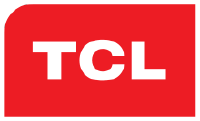Company Analysis NetEase, Inc.
1. Summary
Advantages
- Price (28.78 $) is less than fair price (44.43 $)
- Dividends (2.37%) are higher than the sector average (1.81%).
- The stock's return over the last year (47.25%) is higher than the sector average (-6.06%).
- Current debt level 6.54% is below 100% and has decreased over 5 years from 15.01%.
- The company's current efficiency (ROE=162.7%) is higher than the sector average (ROE=39.58%)
Similar companies
2. Share price and performance
2.1. Share price
2.3. Market efficiency
| NetEase, Inc. | Technology | Index | |
|---|---|---|---|
| 7 days | 0% | 1.7% | 2% |
| 90 days | 3.5% | 2.9% | 5% |
| 1 year | 47.2% | -6.1% | 14.8% |
NETTF vs Sector: NetEase, Inc. has outperformed the "Technology" sector by 53.31% over the past year.
NETTF vs Market: NetEase, Inc. has outperformed the market by 32.44% over the past year.
Stable price: NETTF is not significantly more volatile than the rest of the market on "OTC" over the last 3 months, with typical variations of +/- 5% per week.
Long period: NETTF with weekly volatility of 0.9086% over the past year.
3. Summary of the report
5. Fundamental Analysis
5.1. Stock price and price forecast
Below fair price: The current price (28.78 $) is lower than the fair price (44.43 $).
Price significantly below the fair price: The current price (28.78 $) is 54.4% lower than the fair price.
5.2. P/E
P/E vs Sector: The company's P/E (1.95) is lower than that of the sector as a whole (171.22).
P/E vs Market: The company's P/E (1.95) is lower than that of the market as a whole (45.35).
5.2.1 P/E Similar companies
5.3. P/BV
P/BV vs Sector: The company's P/BV (2.96) is lower than that of the sector as a whole (16.08).
P/BV vs Market: The company's P/BV (2.96) is lower than that of the market as a whole (4.4).
5.3.1 P/BV Similar companies
5.5. P/S
P/S vs Sector: The company's P/S indicator (0.5487) is lower than that of the sector as a whole (125.88).
P/S vs Market: The company's P/S indicator (0.5487) is lower than that of the market as a whole (13.01).
5.5.1 P/S Similar companies
5.5. EV/Ebitda
EV/Ebitda vs Sector: The company's EV/Ebitda (1.64) is lower than that of the sector as a whole (15.56).
EV/Ebitda vs Market: The company's EV/Ebitda (1.64) is lower than that of the market as a whole (24.01).
6. Profitability
6.1. Profitability and revenue
6.2. Earnings per share - EPS
6.3. Past profitability Net Income
Yield Trend: Rising and has grown by 335.56% over the last 5 years.
Earnings Slowdown: The last year's return (0.8465%) is below the 5-year average return (335.56%).
Profitability vs Sector: The return for the last year (0.8465%) exceeds the return for the sector (-27.53%).
6.4. ROE
ROE vs Sector: The company's ROE (162.7%) is higher than that of the sector as a whole (39.58%).
ROE vs Market: The company's ROE (162.7%) is higher than that of the market as a whole (51.15%).
6.6. ROA
ROA vs Sector: The company's ROA (111.99%) is higher than that of the sector as a whole (19.33%).
ROA vs Market: The company's ROA (111.99%) is higher than that of the market as a whole (36.08%).
6.6. ROIC
ROIC vs Sector: The company's ROIC (13.26%) is lower than that of the sector as a whole (13.84%).
ROIC vs Market: The company's ROIC (13.26%) is higher than that of the market as a whole (10.88%).
8. Dividends
8.1. Dividend yield vs Market
High yield: The dividend yield of the company 2.37% is higher than the average for the sector '1.81%.
8.2. Stability and increase in payments
Dividend stability: The company's dividend yield 2.37% has been steadily paid over the past 7 years, DSI=0.86.
Weak dividend growth: The company's dividend yield 2.37% has been growing weakly or stagnant over the past 5 years. Growth over only 0 years.
8.3. Payout percentage
Dividend Coverage: Current payments from income (5.15%) are at an uncomfortable level.
Pay for your subscription
More functionality and data for company and portfolio analysis is available by subscription
Based on sources: porti.ru



